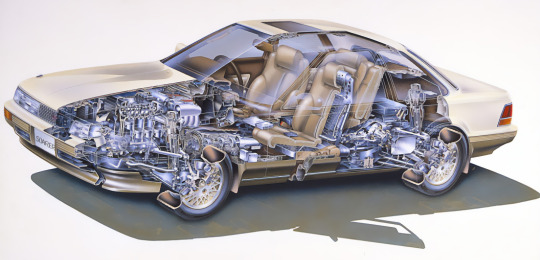#Instrumentation Valves
Explore tagged Tumblr posts
Text
Types of High-Pressure Check Valves
Different types of high-pressure check valves are available in the market, each designed for specific applications and requirements. Among these types, spring-loaded and ball check valves are particularly popular.
Spring-loaded check valves are known for their reliability and versatility. These valves operate by using a spring mechanism that allows forward flow while preventing reverse flow. In many cases, these valves are preferred for their ease of installation and maintenance.

Ball check valves, on the other hand, utilize a spherical ball to prevent backflow. This design offers minimal pressure drop and is highly effective in high-pressure situations. These valves are commonly used in applications where sudden pressure changes are frequent.
Additionally, diaphragm check valves are another option that is often utilized in high-pressure systems. The diaphragm acts as a sealing element that prevents backflow, ensuring optimal performance. Such valves are favored in sensitive applications, including pharmaceuticals and food processing.
Training personnel involved in the maintenance process is equally important. By providing regular training on the latest maintenance techniques and safety protocols, companies can ensure that their staff is well-equipped to handle valve maintenance effectively. Understanding manufacturers’ specifications and operating manuals can further enhance the maintenance process, ensuring that all activities align with industry best practices.
In conclusion, the upkeep of high-pressure check valves is paramount for ensuring operational efficiency. Regular inspections, testing, and adherence to a maintenance schedule are recommended practices that can enhance the reliability and performance of these critical components.
#instrumentation valves#high pressure check valves#one flow direction valve#freture techno#manufacturers#india
1 note
·
View note
Text
Understanding Instrument Valves and Their Importance in Industrial Applications

In industrial systems, precision and reliability are paramount, especially in processes involving the measurement and control of fluids. Instrument valves, a critical component of these systems, ensure safe and efficient operation. At Avlok, we take pride in manufacturing high-quality instrument valves designed to meet the rigorous demands of modern industries. In this blog, we will explore the types, functions, and applications of instrument valves, highlighting their significance in various sectors.
What Are Instrument Valves?
Instrumentation valves are specialized valves used in fluid control systems to regulate, isolate, or vent fluids. These valves are integral to instrumentation systems, ensuring accurate measurement and control in processes like oil and gas extraction, chemical processing, pharmaceuticals, and more. They are designed for precision, often employed in systems that demand high pressure and temperature handling capabilities.
At Avlok, we specialize in manufacturing robust instrument valves that meet international standards, providing reliability and performance in diverse applications.
Types of Instrument Valves
There are several instrument valve types, each serving a unique purpose. Here are the most common types:
1. Ball Valves
Ball valves are widely used for their simplicity and effectiveness. They feature a rotating ball with a hole that allows or blocks fluid flow when turned. These valves are ideal for quick shut-off applications and offer high durability and reliability. We are a leading ball valve manufacturers.
2. Needle Valves
Needle valves provide precise control of fluid flow. They are commonly used in systems where minute adjustments are required, such as in laboratory or instrumentation setups. We are a leading needle valves manufacturers.
3. Manifold Valves
Manifold valves combine multiple valve functions into a single unit, reducing the need for separate valves. They are used in pressure and differential pressure instruments for isolation, equalization, and venting purposes.
4. Check Valves
Check valves allow fluid to flow in one direction only, preventing backflow and protecting sensitive equipment. These valves are essential in maintaining system integrity and efficiency. We are a leading check valve manufacturers.
5. Gauge Valves
Gauge valves are used to isolate pressure gauges from the main process, ensuring accurate readings and protecting the gauges from damage.
Key Applications of Instrument Valves
Instrument valves play a vital role in various industries, including:
1. Oil and Gas
In the oil and gas sector, instrument valves are used in exploration, production, and refining processes to control and monitor fluid flow under extreme conditions.
Avlok's valves are trusted by industry leaders for their durability and performance.
2. Chemical and Petrochemical
Chemical plants rely on instrument valves for precise control of corrosive and high-temperature fluids.
Our corrosion-resistant valves ensure safe and efficient operations in such challenging environments.
3. Pharmaceuticals
Precision is critical in the pharmaceutical industry, where instrument valves are used in processes like filtration, mixing, and sterilization.
Avlok's valves meet stringent hygiene and precision standards, making them ideal for pharmaceutical applications.
4. Power Generation
Power plants utilize instrument valves to regulate steam, water, and other fluids in high-pressure systems.
Our valves are designed to handle the rigorous demands of power generation systems.
Why Choose Avlok for Instrument Valves?
As a leading, Avlok combines innovation, quality, and expertise to deliver products that exceed industry standards. Here are some reasons to choose Avlok:
Unmatched Quality: Our valves are made from premium materials and undergo rigorous testing to ensure reliability and durability.
Customization: We offer tailored solutions to meet specific customer requirements, ensuring seamless integration into your systems.
Global Standards: Avlok's products comply with international quality standards, giving you peace of mind.
Expert Support: Our team of experts provides guidance and support to help you select the right valves for your application.
Conclusion
Instrument valves are indispensable in industrial applications, providing precision, safety, and efficiency. At Avlok, we are committed to delivering top-notch instrument valves that meet the highest standards of quality and performance. Whether you are in the oil and gas industry, pharmaceuticals, or any other sector, our valves are designed to cater to your specific needs.
For more information about our range of instrument valves, feel free to contact us or visit our website. Trust Avlok for all your instrument valve requirements and experience unparalleled quality and service.
#Instrument Valves#Instrumentation valves#ball valve manufacturers#needle valves manufacturers#Manifold valves#check valve manufacturers
1 note
·
View note
Text
Buy top quality Instrumentation Valve in India | Arcellor Controls
Arcellor Controls (India) provides top quality instrumentation valves for a wide range of applications. We have instrumentation valves in different configurations along with various materials and end connection sizes that make us distinctive in the market. We are committed to delivering innovative and perfect instrumentation valves that are unique and precise in design and perform well in low and high temperatures. Our efficient export processes ensure timely delivery and secure handling, allowing our international clients to receive their products with ease.
0 notes
Text
0 notes
Text





Toyota Soarer 3.0 GT-Limited, 1986. The second generation Z20 Soarer shared its platform with the A70 series Supra. It introduced the Electro Multi Vision digital vehicle information display. The 3.0 GT was powered by a DOHC 24 valve turbocharged straight 6
#Toyota#Toyota Soarer#Toyota Soarer Z20#1986#sports coupé#straight 6#24 valve#DOHC#digital instrumentation
311 notes
·
View notes
Text
Still Alive (Radio Mix) // Portal (2007)
#portal#portal (game)#still alive#playstation 3#xbox 360#PC#valve#game#instrumental#2007#oktaviaslabyrinth
36 notes
·
View notes
Text
They need to add more stupid attachment thingies to instruments. Instruments need to get scrunklier.
#-Loki#instruments#trombone#F trigger trombone#trumpet#euphonium#compensating valve euphonium#french horn#double french horn#triple french horn#Music
9 notes
·
View notes
Text
Understanding the meaning, applications, and advantages of control valves.
Control valves are devices that play an essential role in controlling and regulating the flow, pressure, and temperature in industrial processes and control systems. It is installed in the field-level area of the automation pyramid and connected to the control system and PLC through the PLC’s hardware. The global control valve consists of the body, actuator, Positioner, Valve trim, stem, and bonnet to prevent leakage. There are also the Gaskets and seals that are used when connecting the valve with other mechanical parts.
Control valves have many advantages such as Accurate Control of Process Parameters, Easy Automation Compatibility by integrating these items with the main Control systems (DCS and PLC), Energy saving and energy efficiency by optimizing the process condition and minimizing waste, maintaining safe operating conditions and increase process safety factors, Improve Process Efficiency and Increase Product Quality.
Control valves are used in many applications such as the Automotive Industry, Cement and steel, and Oil and Gas Industry, especially in gas valve trains, Renewable Energy, and HVAC Systems.
For full article check the following link:
For more articles about Renewable, Automation and Instrumentation, check the following link:
www.ecaico.com
#automation#instrumentation#renewable#control system#plc#sensors#pressure#gas valve#industrial valves
2 notes
·
View notes
Text
AHHHH THE SPIT. THE SPIT GOT ON ME.
hee...heugh...heeeughh...
#i HATE this instrument#i love tjis instrument :)#the spit valve...finger in the wrong spot...#AHHHHHH#trombone#band!!!!
5 notes
·
View notes
Text
Wait fuck I’m learning a wind instrument. The band kids fucking won.
#chit chat#DAMN it#all throughout high school the marching band kids wanted me to become one of them#and i said I’d never take up mouth instruments because they were gross#and now...#sigh#i do admit that i do find the harmonica a little gross and i do have to try and wipe it down after every exercise#but i don’t have to deal with spit valves or reeds or whatever the flutes do#so there is that#harmonica adventures
6 notes
·
View notes
Text






Shitty soldering job, right?
WRONG
That, my friends, is epoxy.
This one got filed under "haha NOPE" because the cost of the repair would not have been worth it. Epoxy does not melt and wipe off the way solder does; I would have had to basically chisel it off, and who knows how long that would have taken me.
#musical instrument repair#music#brass instrument#brasswind#musical instrument#cornet#epoxy#this is what we in the industry often refer to as a “dad fix”#because 9/10 times it is a kid's dad that does stuff like this#moms do it too but in less destructive ways#like telling the kid who forgot to bring valve oil to just use vegetable oil on the valves because oil is oil#less damaging but still a pain#it is well-intentioned but please just don't#or do since then I get paid to fix the problem
2 notes
·
View notes
Text
Key Features and Advantages of Double Block and Bleed Valves
Double Block and Bleed (DBB) Valves are critical components in systems requiring high safety and integrity, such as oil and gas processing, chemical industries, and refineries. These valves provide a safe and efficient way to isolate pipelines while offering a pressure relief option, making them indispensable in operations involving hazardous materials.

Features of Double Block and Bleed Valves
Dual Isolation Capability: DBB valves offer two independent seals, providing double isolation from the fluid. This ensures that both upstream and downstream sections of the pipeline can be securely shut off.
Pressure Bleed Function: The valve’s bleed feature is critical for releasing trapped pressure between the two seals, ensuring that there is no residual pressure left in the system. This makes it safer for maintenance operations.
Compact and Modular Design: Many DBB valves are designed to save space and reduce installation time while still offering full functionality. This compact design is particularly useful in offshore and subsea environments where space is at a premium.
Robust Materials: Constructed from high-quality materials like stainless steel, duplex steel, or carbon steel, DBB valves are designed to handle extreme pressures, temperatures, and corrosive fluids.
Zero Leakage: DBB valves provide near-zero leakage performance, which is essential in industries where fluid loss or contamination can lead to significant operational risks or environmental hazards.
Advantages of Double Block and Bleed Valves
Improved Safety Standards: The dual isolation feature ensures that maintenance work can be carried out safely without risking fluid leaks, especially in hazardous environments.
Operational Efficiency: By reducing the need for multiple valve installations, DBB valves streamline operations, leading to quicker maintenance procedures and minimizing downtime.
Environmental Compliance: DBB valves play an essential role in preventing environmental contamination by ensuring that no fluid escapes during system shutdown or maintenance.
Lower Cost of Ownership: The combination of fewer components and the ability to isolate and bleed a section of the system reduces the overall costs related to valve installations and maintenance.
Freture Techno Pvt. Ltd., based in Mumbai, India, is a leading manufacturer of Double Block and Bleed Valves. Known for their innovation and dedication to quality, Freture Techno provides reliable solutions for critical applications across industries worldwide.
0 notes
Text
Avlok is one of the most comprehensive design specialists and manufacturer of high quality engineered fittings such as, Instrumentation Pipe Fittings, Instrumentation Tube Fittings, Instrumentation Valves & Fittings, High Temperature Fittings, Pressure gauges, Instrumentation Manifolds, Instrumentation Quick Connects and ISO Conversion Fittings.
Website: https://www.avlok.com/
#Instrumentation Tube Fittings#Instrumentation Pipe Fittings#Quick Connect Coupling#Instrumentation Valves#Manifolds#Pipe/Tube Clamps#Pressure Gauges
0 notes
Text
Understanding the Functionality of Valves in Instrumentation Systems |Arcellor controls
The tricky global of instrumentation structures is predicated on a silent orchestra of additives working collectively to exactly control and monitor business strategies. Among these key players are device valves, regularly small but robust in their features. Let's discover the crucial role instrument valves play in making sure the easy operation of diverse commercial packages.
Instrument Valves: Masters of Control
Instrument valves, also called instrumentation valves or gauge valves, are specialized valves designed for specific regulation of float charges, pressures, and course of fluids (liquids, gasses, or slurries) inside instrumentation structures. Unlike their larger cousins in commercial piping, instrument valves usually address smaller glide charges and require an excessive diploma of manipulation.
Key Features of Instrument Valves:
Smaller Size: Ranging from 1/eight inch to one inch in length, device valves are nicely-applicable for tricky managed loops inside instrumentation structures.
High Precision: Their design prioritizes precise management over on/off float or throttling (gradually adjusting) to go with the flow prices and pressures.
Leak-Tight Performance: Tight close-off abilities are essential to save you leakage and keep gadget integrity.
Applications of Instrument Valves:
Instrument valves find software in a huge variety of industries relying on precise process manage:
Chemical Processing: Regulating the float of chemicals in reactors, pipelines, and analytical systems.
Oil and Gas Production: Controlling glide rates and pressures at some point of drilling, refining, and transportation.
Power Generation: Maintaining the most reliable glide and stress of fluids in boilers, generators, and cooling structures.
Pharmaceutical Manufacturing: Ensuring sterile and precise go with the flow of fluids in production approaches.
Water Treatment Plants: Regulating glide prices of water and treatment chemicals.
Types of valves instruments:
A diverse variety of tool valves exist, each catering to unique manipulate wishes:
Needle Valves: Offer exceptional-tuned control over float quotes, perfect for low-flow applications.
Ball Valves: Provide short on/off waft management with a rotating ball detail.
Globe Valves: Offer correct throttling capabilities with a forestall-disc design.
Globe Valves: These valves are known for his or her tight close-off abilities and throttling ability.
Check Valves: Allow glide in one direction handiest, preventing backflow.
Butterfly Valves: Offer a fee-powerful alternative for on/off drift management in large traces.
Arcellor Controls: Your Partner in Industrial Control
Arcellor Controls, a globally recognized leader in business automation solutions, knows the crucial position of device valves in manner control. They provide a comprehensive range of amazing tool valves, catering to various industrial programs. Their valves are acknowledged for their:
Durability: Manufactured from high-grade substances to withstand harsh industrial environments.
Reliability: Built to perform consistently and dependably beneath disturbing situations.
Compliance: Adhere to industry requirements and specs for protection and performance.
Conclusion
By understanding the capability of tool valves, we benefit from a deeper appreciation for the problematic workings of instrumentation systems. These silent maestros make sure to manipulate over numerous commercial tactics, keeping them operating effectively and effectively. For dependable and awesome tool valves, Arcellor Controls may depend on associates in reaching the most desirable process manipulation.
#instrument valve#instrumentation valves#valves instruments#valve instruments#valves and instruments#valves in instrumentation
0 notes
Text
https://www.phoenix.ind.in/instrumentation-valves-manufacturer-supplier-india.php
0 notes
Text

Band of 107th U.S. Colored Infantry at Fort Corcoran, Arlington, Va. holding saxhorn brass valve instruments. These saxhorns were the type of instruments played at the funeral of African Civil War hero and Captain Andre Cailloux. Many of the instruments were played over the shoulder to play to the army following the band. Instruments today face forward and bands can be in the middle or back of a procession.
Library of Congress
Smith, William Morris, photographer
Created / Published
1865
#african#afrakan#kemetic dreams#africans#brownskin#brown skin#afrakans#library of congress#william morris#1865#fort corocran#arlington#va#saxhorn brass#valve instruments#civil war heros#photographers#photographer
16 notes
·
View notes